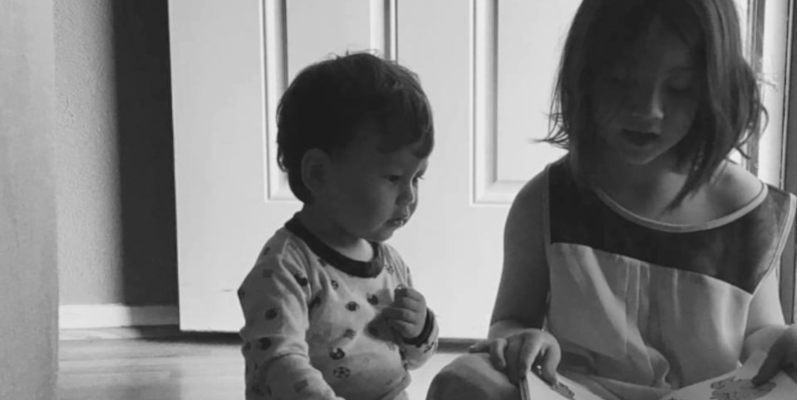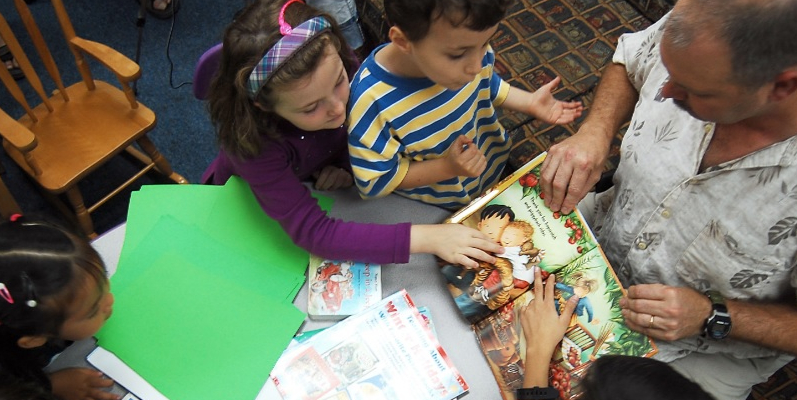Reading books aloud to kids can be one of the most powerful practices in your classroom or, for that matter, your home. There’s much for us, families and educators, to appreciate about the read-aloud.
This post will be short, but hopefully informative in a “reminder” kind of way. Here for our benefit, quotes from professional peers:
Read to them. Talk to them. LISTEN to them. Expose them to people who are different from them. Never say “those people.” Young people hear this as judgement of others. If people who don’t look, believe, think, act as you do aren’t in your lives, find them in books and share those books with your young people. –Jacqueline Woodson
Let me remind you that literature in all its many forms has such potential to expand the horizons of every child—regardless of background or baggage, privilege or poverty. When we read aloud to them, we offer them new vistas and new visions. –Lester Laminack
It slows us down, relaxes us, reminds us of the joy and inspiration of a well-crafted story. Being read to puts us in the frame of mind for learning and increases literacy achievement. –Pernille Ripp
How are people practicing literacy in the community and finding through local practices amazing intellectual and cultural expressions to bring to children in the classroom? –Ernest Morrell
Teachers can use read-alouds to create a class bond; promote a love of reading; preview information, themes, or text structures; model effective reading; show how texts connect with one another (intertextuality); or provide an exemplar for a genre of writing. The read aloud is like the Swiss Army knife of literacy; it has multiple uses at every age and in every content area. –Laura Varlas
Don’t wreck the read aloud with too many instructional interruptions. Keep it simple and fun. –Barbara Moss
Don’t worry about kids understanding every word, just find a great story. They will get it. Preread the text on your own, and then pull out all the stops as you read it in class. And remember, you’re never too old to get something out of a great picture book. –Regie Routman
No player in the NBA was born wanting to play basketball. The desire to play ball or to read must be planted. The last 25 years of research show that reading aloud to a child is the oldest, cheapest and must successful method of instilling that desire. Shooting baskets with a child creates a basketball player; reading to a child creates a reader. –Jim Trelease
The fire of literacy is created by the emotional sparks between a child, a book, and the person reading. It isn’t achieved by the book alone, nor by the child alone, nor by the adult who’s reading aloud—it’s the relationship winding between all three, bringing them together in easy harmony. –Mem Fox
When kids hear a book read aloud to them they get the cognitive benefits of observing the mechanical, technical bits of decoding, fluency, phrasing, prosody, recognition of story elements, understanding universal truths or themes, interpretation of author’s craft. At the same time, they receive the value of the affective domain of building community, enjoyment of story or acquisition of new information, the understanding of how personal preferences for genre or mode serve to build a personal reader identity.
The read-aloud is indeed the Swiss Army Knife of literacy. Multi-purpose with a high performance ratio.
It’s simplicity and function are formidable. Let us wield it well.











Such an impactful post: Thank you, Valinda! This . . . “The read-aloud is indeed the Swiss Army Knife of literacy. Multi-purpose with a high performance ratio. It’s simplicity and function are formidable. Let us wield it well.”
Thanks, Fran. I thought that metaphor found in an ASCD article was powerful. Thanks for reading and responding!